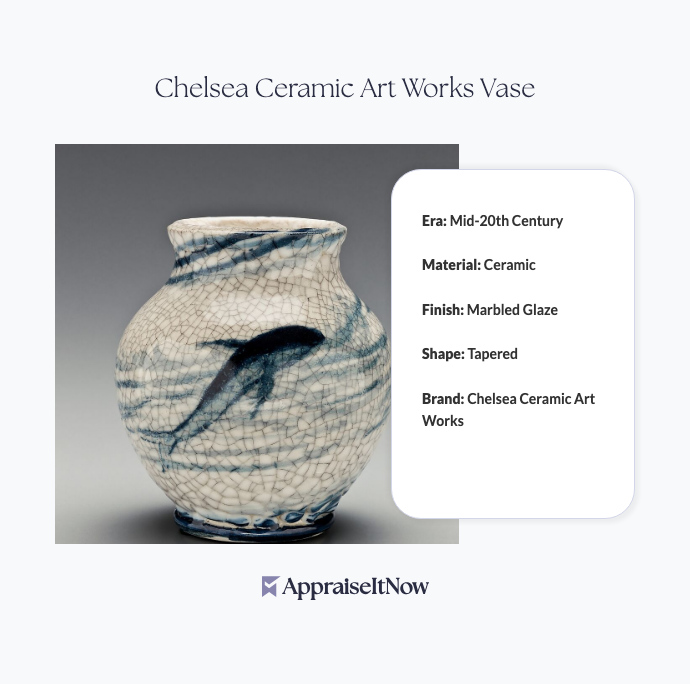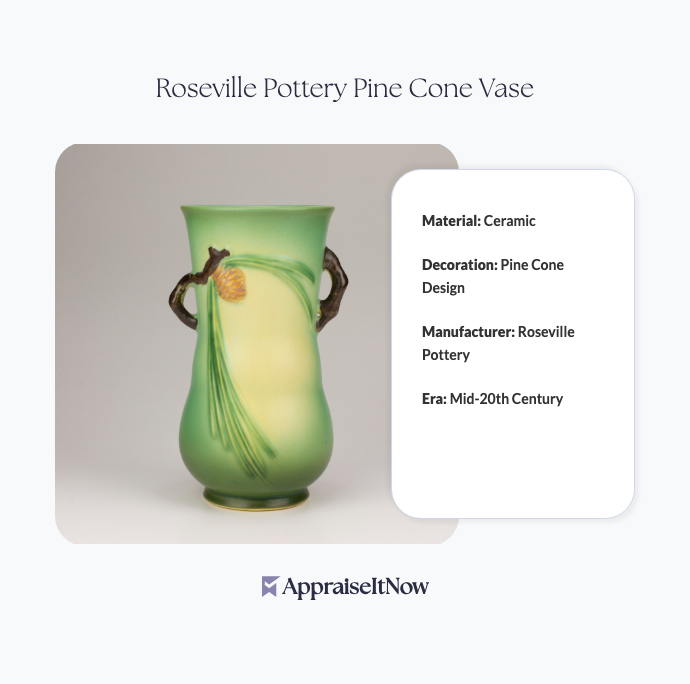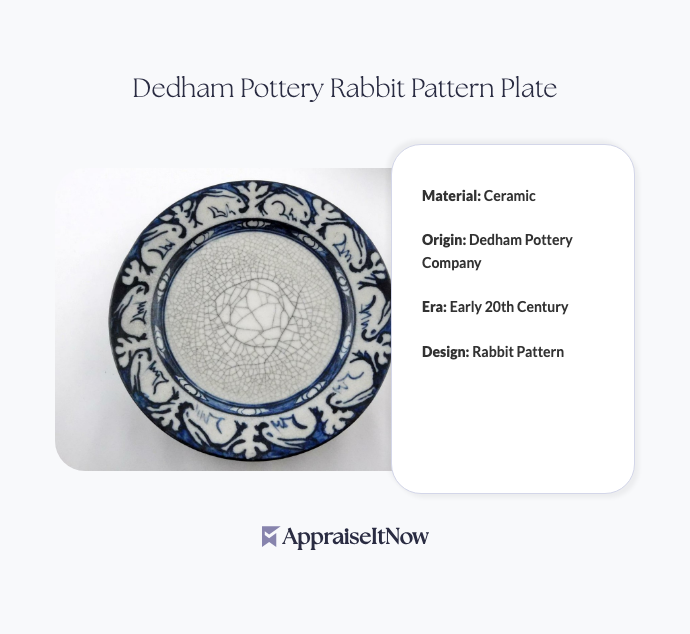<h1>How to Get Your Spode Blue Italian Complete Service Appraised</h1>
<p>If you've inherited, discovered, or are considering purchasing a Spode Blue Italian Complete Service, understanding its current market value is essential for insurance, estate planning, or sale purposes. This iconic <strong>English porcelain dinnerware set</strong>—valued between <strong>$1,500 and $3,000</strong> for a complete service—represents both historical significance and financial worth that deserves proper professional evaluation.</p>
<h2>Understanding Spode Blue Italian's Heritage and Value</h2>
<p>Your Spode Blue Italian Complete Service carries over 200 years of English ceramic excellence. First introduced in <strong>1816</strong> by the renowned <strong>Spode pottery</strong>, this dinnerware set became synonymous with timeless elegance through its distinctive <strong>cobalt blue and white floral motif</strong>. The pattern's enduring appeal and exceptional craftsmanship have positioned it as one of the most sought-after china patterns among collectors and homemakers alike.</p>
<p>Is Spode worth anything? The answer is definitively yes. Unlike mass-produced dinnerware that loses value over time, authentic Spode Blue Italian commands solid collector interest due to its heritage, hand-painted details, and proven durability. Understanding what makes certain china patterns more sought after than others helps you appreciate why your complete service holds meaningful value in today's market.</p>
<h2>Key Characteristics That Define Your Service's Worth</h2>
<p>The value of your Spode Blue Italian Complete Service depends on several interconnected factors. What makes this pattern particularly desirable is its <strong>comprehensive composition</strong>—a complete service typically includes dinner plates, salad plates, soup bowls, teacups and saucers, and serving platters. This completeness significantly increases value compared to incomplete sets or individual pieces.</p>
<p>How old is Spode Blue Italian? While the pattern debuted in 1816, the specific production date of your service affects its appraisal. Pieces produced in the <strong>19th century</strong> command different premiums than 20th-century examples, and understanding this distinction requires examining manufacturing details and maker's marks. The question becomes not just about the pattern's age, but when your particular pieces were manufactured.</p>
<p>When evaluating your dinnerware, consider these defining characteristics:</p>
<ul>
<li><strong>Hand-painted details</strong> versus transfer-print designs, with hand-painted examples commanding premiums</li>
<li><strong>Porcelain quality</strong> and weight, indicating higher-grade clay composition</li>
<li><strong>Maker's marks and stamps</strong>, essential for authentication and dating</li>
<li><strong>Set completeness</strong>, with five-piece place settings plus serving pieces valued most highly</li>
<li><strong>Condition</strong>, including chips, cracks, crazing, or glaze wear</li>
</ul>
<div class="callout tip"><p><strong>Pro Tip</strong></p>
<p>Photograph both the front and back of your pieces, ensuring clear images of maker's marks. These stamps are crucial documentation for professional appraisals.</p></div>
<h2>Identifying Authentic Spode and Detecting Vintage Examples</h2>
<p>How can you tell a vintage Spode from reproductions? Authentic Spode Blue Italian exhibits specific characteristics that distinguish genuine pieces from later imitations. Professional appraisers use specialized knowledge to verify authenticity, examining factors you can observe yourself before seeking formal evaluation.</p>
<p>Examine your pieces carefully for <strong>maker's marks</strong>—genuine Spode items bear identifiable pottery stamps on the reverse. The marking evolved over time, so different era stamps indicate when your service was manufactured. Quality English <a href="/blog/appraisals-for-fine-porcelain-and-ceramics-valuing-delicate-artistry">porcelain and ceramics</a> also exhibit specific weight and glaze characteristics that reveal production methods and materials.</p>
<p>How can you tell if blue and white porcelain is valuable? Beyond the pattern name and maker, consider whether your pieces demonstrate the <strong>superior craftsmanship</strong> associated with Spode's reputation. The cobalt blue hue should maintain consistent depth and saturation, the hand-painted floral details should show artistic variation rather than mechanical precision, and the porcelain body should feel substantial and ring clearly when gently tapped. These qualities separate high-quality vintage Spode from lesser imitations.</p>
<p>Is Spode high quality? Absolutely. The pottery's dominance in the English ceramics market stemmed from genuine technical excellence. Spode pioneered innovations in English ceramics, and their Blue Italian pattern benefited from these advances. Your complete service represents not just a dinner set but a demonstration of <strong>British ceramic achievement</strong> during the golden age of English pottery.</p>
<h2>Determining Your Service's Current Market Value</h2>
<p>The <strong>$1,500 to $3,000 valuation range</strong> for a complete Spode Blue Italian service reflects current collector demand and market conditions. However, your specific set may fall anywhere within this range depending on production date, condition, and completeness. How old is your particular service, and does it include all original pieces?</p>
<p>Complete services command premium pricing compared to partial sets or individual place settings. A full five-piece place setting in excellent condition might sell for $200-400, meaning a 12-person complete service plus serving pieces could justify valuations in the higher range. Conversely, sets with replacements, repairs, or missing pieces see correspondingly reduced values.</p>
<p>Where can you sell Spode china? Understanding market outlets helps contextualize appraisal value. Online auction platforms, specialty antique dealers, estate sale companies, and direct-to-collector sales each offer different price points and buyer bases. A certified appraisal establishes baseline value whether you're exploring <a href="/blog/what-you-need-to-know-about-personal-property-appraisals">personal property appraisals</a> for estate purposes or positioning your set for sale.</p>
<h2>Essential Documentation for Professional Appraisal</h2>
<p>When seeking an appraisal, compile specific information that professional evaluators need. Gather your complete service and prepare to discuss its <strong>provenance</strong>—where it came from and how long you've owned it. Identify the maker's marks visible on each piece type (dinner plates, teacups, serving platters often carry different stamps).</p>
<p>Documentation should include the <strong>condition of every piece</strong>, noting any cracks, chips, repairs, or glaze wear. While complete sets command higher values, professional appraisers understand that household ceramics often show signs of use. Be honest about damage; professional evaluators can see it anyway and appreciate transparent reporting.</p>
<p>Photograph your pieces before appraisal, capturing both front patterns and reverse maker's marks from multiple angles. This creates a permanent record of your service's condition and authenticates your claim of ownership. Clear photos help appraisers prepare before in-person evaluation, making the process more efficient and thorough.</p>
<div class="callout note"><p><strong>Documentation Benefit</strong></p>
<p>Professional photographs provide insurance documentation if your service is lost, damaged, or stolen, making appraisal photos valuable for protection beyond valuation purposes.</p></div>
<h2>Condition Assessment and Its Impact on Value</h2>
<p>How do you know if your plate is worth money? Beyond maker name and pattern recognition, condition significantly determines value. A pristine Spode Blue Italian complete service from the 19th century might approach the $3,000 upper range, while the same set showing moderate use might fall to $1,800-$2,000. Understanding what "condition" means in <a href="/blog/appraisals-for-fine-porcelain-and-ceramics-valuing-delicate-artistry">antique ceramics appraisal</a> helps you anticipate your service's likely valuation.</p>
<p>Professional appraisers evaluate condition using industry standards. Excellent condition means minimal wear—perhaps slight glaze crazing or faint use marks. Very Good condition shows obvious but minor wear consistent with careful household use. Good condition includes visible wear, possibly small unobtrusive chips, and possibly one or two non-original replacement pieces. Fair condition involves substantial wear, noticeable damage, or significant replacements.</p>
<p>Your service's rarity also affects condition-based pricing. Complete five-person services in excellent condition command premium valuations. Larger sets (eight or twelve place settings) see increased value through their comprehensiveness, even if condition is merely Very Good. Appraisers balance these factors holistically rather than mechanically applying formulas.</p>
<h2>Why Professional Appraisal Matters for Your Collection</h2>
<p>Attempting to value your Spode Blue Italian service yourself risks undervaluation or overestimation. Professional appraisers specializing in <a href="/blog/appraising-antiques-unveiling-the-hidden-treasures-in-your-collection">antiques and collectibles</a> bring expertise in market trends, comparable sales data, and authentication that individual research cannot match. They understand regional variations, seasonal demand fluctuations, and buyer preferences that influence actual selling prices.</p>
<p>Beyond financial assessment, certified appraisals provide <strong>documented proof of value</strong> essential for insurance companies, estate attorneys, and financial institutions. When inheriting family <a href="/blog/how-to-get-an-accurate-antique-furniture-appraisal">antique furniture</a> and ceramics, or planning charitable donations of fine china, professional valuation establishes defensible value figures that standalone estimates cannot provide.</p>
<p>An appraisal from a credentialed expert—whether certified by <strong>AAA, ISA, ASA, CAGA, or AMEA</strong>—carries weight in legal and financial contexts. These credentials indicate the appraiser follows <strong>USPAP standards</strong> (Uniform Standards of Professional Appraisal Practice), ensuring systematic evaluation and transparent methodology that protects your interests.</p>
<div class="callout tip"><p><strong>Strategic Insight</strong></p>
<p>If you're considering donating your Spode Blue Italian service to a museum or charitable organization, a professional appraisal establishes the <strong>tax deduction value</strong>, potentially offsetting the donation's cost significantly. Learn more about <a href="/blog/personal-property-appraisals-for-charitable-donations-maximizing-tax-benefits-through-accurate-valuations">maximizing tax benefits through accurate valuations</a>.</p></div>
<h2>When and How to Seek Professional Appraisal</h2>
<p>You should obtain a professional appraisal when planning estate distribution, seeking insurance coverage, considering sale or donation, or verifying authenticity of a suspected bargain purchase. AppraiseItNow connects you with qualified appraisers specializing in <a href="/types/household-goods">household goods and fine ceramics</a> throughout the U.S.</p>
<p>The appraisal process begins with submitting photographs and detailed descriptions through our secure online platform. Professional appraisers review documentation, ask clarifying questions, and either provide valuations based on photographic evidence or request in-person inspection for high-value services. For complete Spode Blue Italian services valued above $2,000, most appraisers prefer examination in person to verify condition and authenticity thoroughly.</p>
<p>How do you find out how much your old dishes are worth? Start by documenting what you have—pattern name, maker information, piece counts, and condition observations. Then submit this information to qualified appraisers who can provide preliminary guidance and professional valuations. Within days, you'll receive certified appraisals suitable for insurance, sale preparation, or estate planning purposes.</p>
<p>AppraiseItNow's network of credentialed experts across all 50 states eliminates geographic limitations. Whether your Spode Blue Italian service is in New England, the Southwest, or anywhere else, qualified appraisers can evaluate your pieces and provide detailed, defensible valuations that stand up to professional scrutiny.</p>
<hr />
<div class="callout note"><p><strong>Key Takeaway</strong></p>
<p>Your Spode Blue Italian Complete Service represents a valuable piece of English ceramic heritage worth $1,500-$3,000 or potentially more depending on age and condition. Professional appraisal provides accurate valuation, authentication, and documentation essential for insurance, estate planning, charitable donations, or sale purposes. AppraiseItNow connects you with USPAP-certified appraisers specializing in fine ceramics and <a href="/types/memorabilia-and-collectibles">collectible tableware</a>, ensuring your service receives expert evaluation and accurate market-based valuation.</p></div>







.avif)







